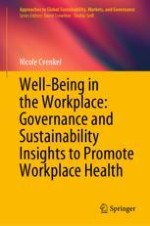2020 | OriginalPaper | Chapter
3. Workplace Well-Being: Understanding Psychologically ‘WELL’ Employees and the Sustainable Healthy Workplace
Author : Nicole Cvenkel
Published in: Well-Being in the Workplace: Governance and Sustainability Insights to Promote Workplace Health
Publisher: Springer Singapore
Activate our intelligent search to find suitable subject content or patents.
Select sections of text to find matching patents with Artificial Intelligence. powered by
Select sections of text to find additional relevant content using AI-assisted search. powered by
